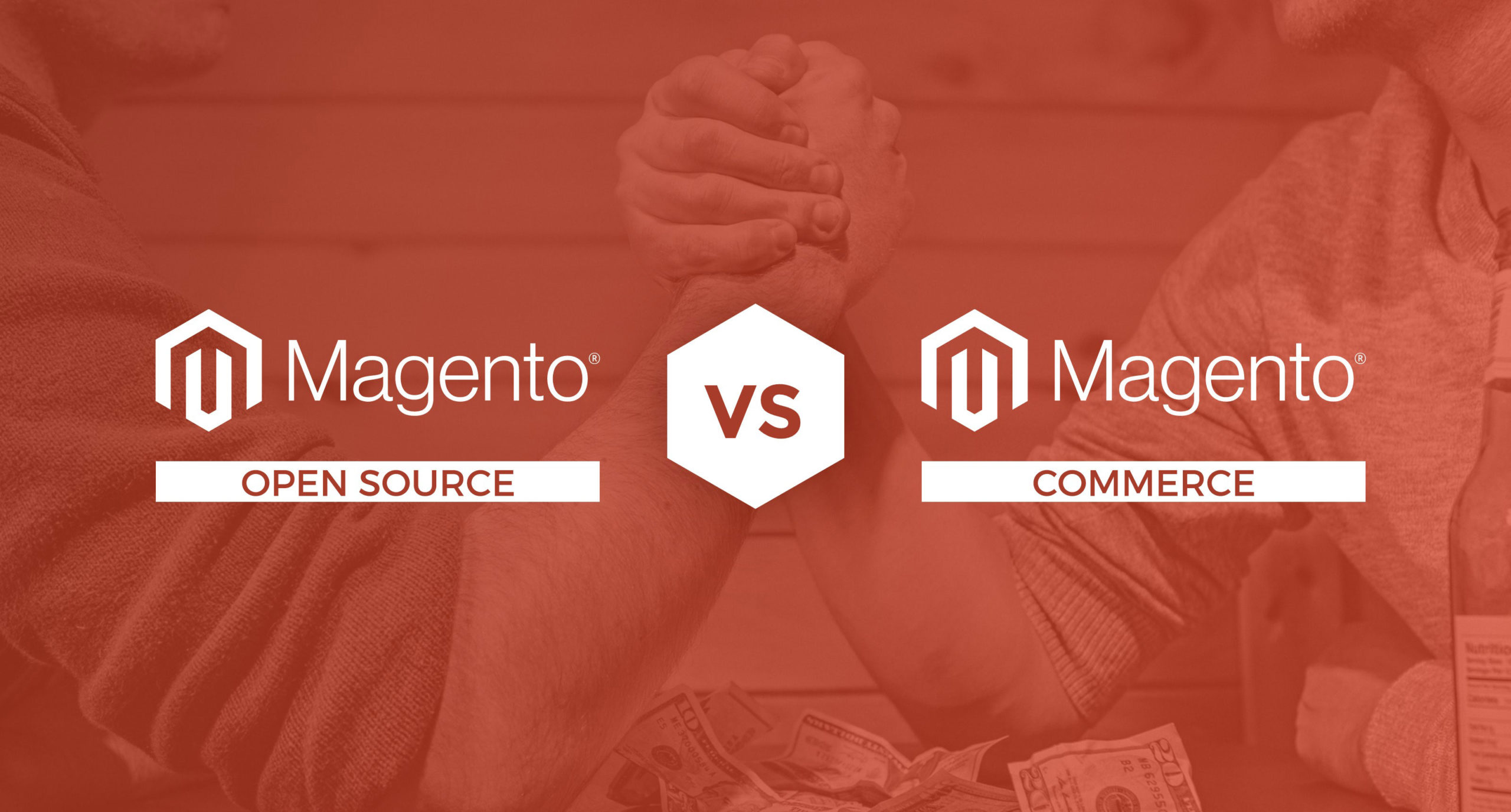Whether you are just starting your eCommerce website or looking to enhance your existing site, the numerous options available to you can be overwhelming. In the eCommerce space, the Magento Commerce platform is simply the favorite, both among non-technical users and developers. As a savvy business owner, you’re choosing wisely with this amazingly powerful platform, but you may be wondering which version, Open Source or Commerce, is better for you. In this post, we will help you compare Magento Open Source and Magento Commerce and determine which is the best for your business. Let’s dive in!
Magento Open Source:
Magento Open Source, formerly known as Community Edition, is free for anyone to download and use to build an online store. That sounds great, however, it does mean you’re putting in a lot of legwork on your end to get things up and running, which means it’s going to be far from free when you’re all said and done.
Magento Open Source is a good starting point for businesses who are looking to build and establish their eCommerce presence. While it has basic eCommerce functionality, Open Source lacks the added features and benefits that Commerce offers to help business owners grow and scale their new eCommerce site.
Magento Commerce:
Magento Commerce, formerly Enterprise Edition, is the paid version of Magento that allows for many more advanced features, more customization opportunities, and includes updates and support from Adobe, who own Magento. Magento Commerce is for businesses that already have an eCommerce presence that are looking to use analytics, data, and tools to help engage and retain their existing customer base, along with leveling up their current eCommerce presence.
Both Open Source and Commerce are open architecture, meaning the code is open and able to be edited, and both are able to benefit from Magento Extensions Marketplace, allowing for integrations with various databases. While they both use the same core, you will not be able to switch between them easily. If you’re looking to migrate over from Magento Open Source to Commerce, you’ll need to look into bringing on a team of experts, like 121eCommerce, to ensure a smooth transition.
Now that we have established what each version is fundamentally and how they’re similar, let’s explore some of the main differences that set them apart.
[gray-box]〈Free Guide〉 Magento Open Source vs Commerce: Similarities, Differences, and Our Recommendations [/gray-box]
Performance
The clearest distinction between the two versions of Magento is that Commerce is leagues beyond Open Source when it comes to performance; it is simply leaner, faster, and more scalable. How it does this is through optimized databases and by using leaner versions of code. Commerce comes with Fastly, which is a Content Delivery Network extension that serves up content more efficiently through caching. This means pages and content loads faster, which correlates directly to higher sales in eCommerce.
Magento Commerce platform also includes New Relic, which is a performance monitoring system that ensures everything is optimized by flagging things like database queries which may be slowing things down. You get to see everything in real-time, so there’s no delay fixing as they arise.
Commerce automatically deploys on top of Amazon Web Services, so it can be easily set up globally to any of the AWS availability zones.
Functionality
The reason Commerce costs more is that it simply enables users to achieve so much more.. Some of the features exclusive to Enterprise members include a robust B2B commerce suite, Magento PageBuilder, and a content management system. The features are also upgraded regularly as the new versions of Commerce come out, making the functionalities better and more robust over time. The features are comprehensive and scalable, making implementation simpler than with Open Source.
One of the many Commerce features that blow Open Source out of the water is the native B2B suite with robust functionality, including:
- Sell on terms and with credit limits
- Easy account management
- Custom pricing & catalogs
- Fast ordering by SKU or CSV upload
- Streamlined quote management and price negotiation
Merchants can create a page that caters to both B2B and B2C seamlessly and creates a great experience for both.
Sure, with heavy customizations and extensions you could get your Open Source system to a similar tier as what you get out of the box with Commerce, but doing so is costly to set up and maintain over time.
And because Open Source is not as lean as Commerce, these extra customizations can slow down site speed and make a poor user experience.
Commerce also comes with extensive security features including firewalls, secure networking connectivity, and DDOS protection. These features and more will ensure your website and customer data are protected.
Marketing Tools
Magento Commerce has a huge advantage in marketing over Open Source as well.
While both versions include basic SEO boosting functions, like meta descriptions, tags, and custom URLs, there are some marketing features unique to Commerce, including:
- Advanced customer segmentation
- Targeted content
- Customer loyalty system
These are just some of the features that can help make marketing a breeze and save your team hours of time.
You won’t need to call the developers every time you want to build a landing page to showcase a sale or new collection. Magento Commerce makes content management simple with Page Builder, an easy-to-use, drag-and-drop-interface that includes instant preview and in-context text editing. Easily add visual effects and schedule content to go live in the future with staging and preview functionality.
Commerce also allows you 24/7 access to Magento customer service and your site is guaranteed to be up and running 99.99% of the time. You get your own Technical Account Manager who you can contact if you have any issues. You don’t have to worry about things breaking and you having to manage it all on your own, as you would with the Open Source platform.
Automated marketing emails are also a great added bonus since they allow you to specifically target people at various stages of your funnel. Bringing back people who showed interest in your products, but never completed the checkout is a great way to increase your conversion rate.
Lastly, Magento’s Business Intelligence tool allows your team to easily access data from multiple sources and pull them together into comprehensive reports and lead to new marketing insights.
Conclusion
Commerce simply comes with a wealth of features that make everything so much simpler and quicker to run, without having to get a developer to do a million customizations to get you to that level in Open Source.
However, there are times when Open Source is a better option such as when you are looking to avoid cloud onboarding assistance or interested in native capabilities. That being said, it’s important to remember that Commerce is not a platform you’ll be able to use straight out of the box. You’ll need help from a team of experts to get your site ready with everything you need to run your online store and maximize those checkouts.
Whichever you choose for your company, rest assured you’ll already have an edge over many of your competitors on other platforms. Magento is king in the eCommerce world.
Related Articles:
How to Choose an eCommerce Platform Based on TCO Total Cost of Ownership
Magento 2 – Opportunities To Save Money (And Where Not To)



Leave a Reply
You must be logged in to post a comment.